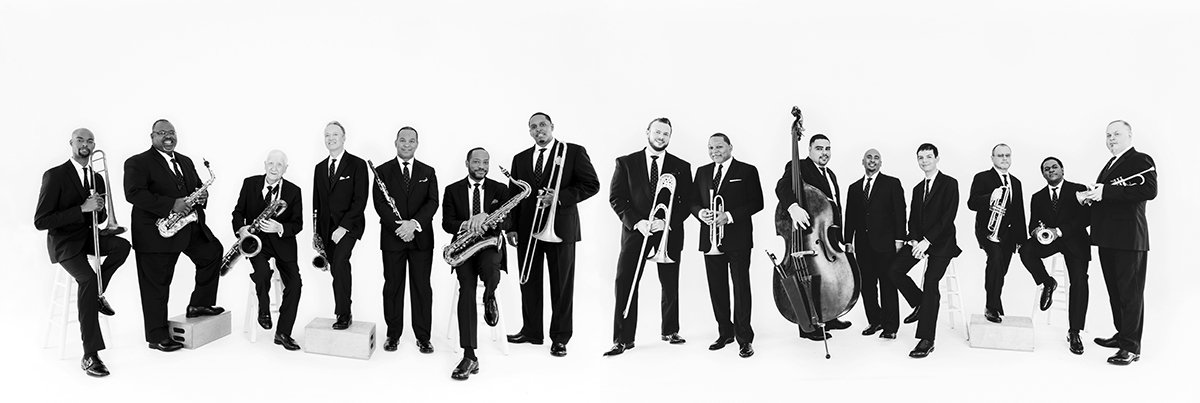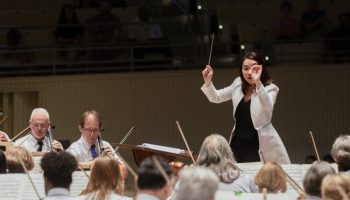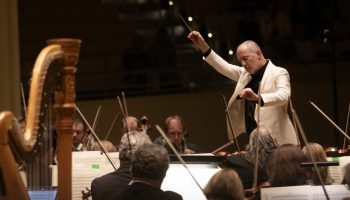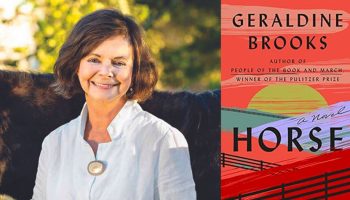Bebop pioneer and American Jazz trumpeter Dizzy Gillespie said something to Wynton Marsalis that changed his view on big bands forever: “One should not consider it an achievement to lose one’s orchestral tradition.”
Since jazz became a popular style of music beginning in the late 19th century, the way musicians perform jazz has evolved and some musicians have lost touch with the fundamental orchestra-styled component of jazz. Marsalis, managing and artistic director of Jazz at Lincoln Center, explores the roles of orchestral instrumentation through the syncopated dance beats of New Orleans.
The Jazz at Lincoln Center Orchestra with Wynton Marsalis will perform at 8:15 p.m. August 25 in the Amphitheater. The performance, titled “Birth of the American Orchestra,” explores the history of big band and orchestral jazz. This performance focuses on composers such as Benny Carter, Eddie Durham and Duke Ellington.
The orchestra was established in 1988, a year after Marsalis founded Jazz at the Lincoln Center, as part of JALC’s summer concert series “Classical Jazz.” In 1991, JLCO became the resident and touring big band for the organization. By the early 2000s, the orchestra was performing work by more than 60 composers.
Fifteen professional jazz musicians make up the JLCO, performing with a mix of sounds — trumpets, saxophones, trombones, pianos and guitars. This orchestra is considered the “finest big band in the world today,” according to their website.
JLCO begins their musical journey through the “Birth of the American Orchestra” with one of the first composers in jazz, Jelly Roll Morton, a New Orleans Creole.
“He was a master of hot music and improvisation, but wrote everything out and expected musicians to read every note of it,” Marsalis said in an interview with PlaybillArts. “In his music, we find everything that will be developed in orchestral jazz.”
The performance will also explore composers such as Don Redman and Fletcher Henderson who reached popularity in the mid-1920s. As a member Henderson’s band, Louis Armstrong taught the world how to phrase with swing. He performed with improvised soloists — unlike Morton’s carefully mapped-out notes — that were as logical as compositions.
“This evolution continues into what is called ‘The Jazz Age,’ ” Marsalis said. “From the Jazz Age to the Swing Era, it was a revolution in sound. Bands swung on everything from European classics to the American popular song, from nursery rhymes to the blues, and many of the musical objectives and imperatives established in the early 1920s had been realized and developed.”
Seton Hawkins, manager of education resources at Jazz at Lincoln Center, said the performance would reflect the topics morning lecturers have discussed throughout the week. He said the performance serves
as the “musical answer” to Marsalis’ Monday morning lecture.
On Monday, Marsalis discussed the history of jazz and was accompanied by musicians who demonstrated the varied styles of music as America evolved from the adoption of the Constitution to present day. Tonight’s performance will reflect the evolution of jazz in a colorful and energetic way through music.
The concert will specifically focus on how music developed during the 1920s through the 1940s. It also expresses the view of American society as it develops during these decades and how big bands became ingrained in American culture, Hawkins said.
“We’re talking about a lot of the same concepts [from the lecture] of how this music came about,” he said. “The things that he’s going to bring up about how jazz forms are crucial to understanding how big bands came about and why they’re important to America and how they only really could have come about in America.”





